Dreaming of renovating your house? Changing the lighting? Improving the thermal insulation? Home improvement loans can turn those dreams into reality. These loans offer homeowners a way to finance renovations, upgrades, and repairs, from minor updates to complete overhauls.
With a range of financing options available, you’re sure to find a loan that suits your budget and project needs. However, navigating the world of home improvement loans can feel overwhelming. With various loan types, interest rates, and lender requirements, it’s essential to understand your options.
This guide will walk you through the following:
- Types of home improvement loans: Discover the differences between popular options, such as home equity loans, personal loans, and FHA 203(k) loans;
- Loan terms and qualifications: Learn about interest rates, repayment periods, and eligibility criteria for each loan type;
- Choosing the right lender: We’ll provide tips on comparing lenders and finding the best fit for your situation;
- Tips for a smooth borrowing experience: Discover how to improve your chances of approval and ensure a secure and financially sound loan process.
Get ready to breathe new life into your home! This guide will equip you with the knowledge to confidently navigate the world of home improvement loans and finance the home of your dreams.
Home improvement loans: What are they?

Thinking about finally renovating your home? Whether it’s modernizing your kitchen, building the deck of your dreams, or investing in solar panels, a home improvement loan could be the perfect way to finance your plans.
These loans come in a variety of forms, each designed for specific goals and situations. That’s why understanding the available options and their characteristics is crucial to making the best decision for your wallet.
Home improvement loans are specifically designed to finance home improvement projects, from small repairs and cosmetic upgrades to large-scale renovations.
With a home improvement loan, you can bring your vision to life at low interest rates, without having to dip into your savings or emergency fund.
What are the possibilities when it comes to using home improvement loans?

The possibilities for using home improvement loans are vast and can be tailored to your specific needs and goals for your property. However, each use often requires a specific type of loan, which we’ll delve into further later on.
For now, let’s explore some of the main applications of this loan type and discover what you can achieve with it.
Renovations and upgrades
You can secure a home improvement loan to renovate your home and breathe new life into your living spaces. This includes:
- Structural renovations: such as room expansions, swimming pool construction, solar panel installation, and more;
- Kitchen and bathroom modernization: including upgrading tiling, installing custom cabinets, sinks, and bathtubs;
- Aesthetic improvements: such as interior and exterior painting, replacing flooring, installing drywall, and upgrading lighting;
- Preventative maintenance: addressing repairs in areas like the roof, plumbing, electrical systems, or other necessary maintenance to prevent larger problems in the future.
Energy efficiency and sustainability
Home improvement loans can also be utilized to make your home more sustainable and energy-efficient. Consider these applications:
- Solar panel installation: reducing your electricity bills significantly;
- Replacing windows and doors: opting for more efficient models that improve thermal and acoustic insulation;
- Implementing rainwater harvesting systems: promoting water conservation and savings;
- Installing solar water heating systems: lessening reliance on traditional energy sources.
Accessibility and security
Another valuable use for a home improvement loan is to enhance your property’s accessibility and security, essential features for any home to provide well-being and peace of mind. Examples of this application include:
- Adapting for people with special needs: installing ramps, grab bars, home elevators, and other modifications;
- Installing security systems: incorporating alarm systems, security cameras, electronic gates, and other devices to protect your property.
Other Uses
Furthermore, home improvement loans can serve purposes beyond structural renovations. A prime example is using the loan to finance the purchase of custom-built furniture or to pay down the balance on an existing mortgage.
Benefits of home improvement loans
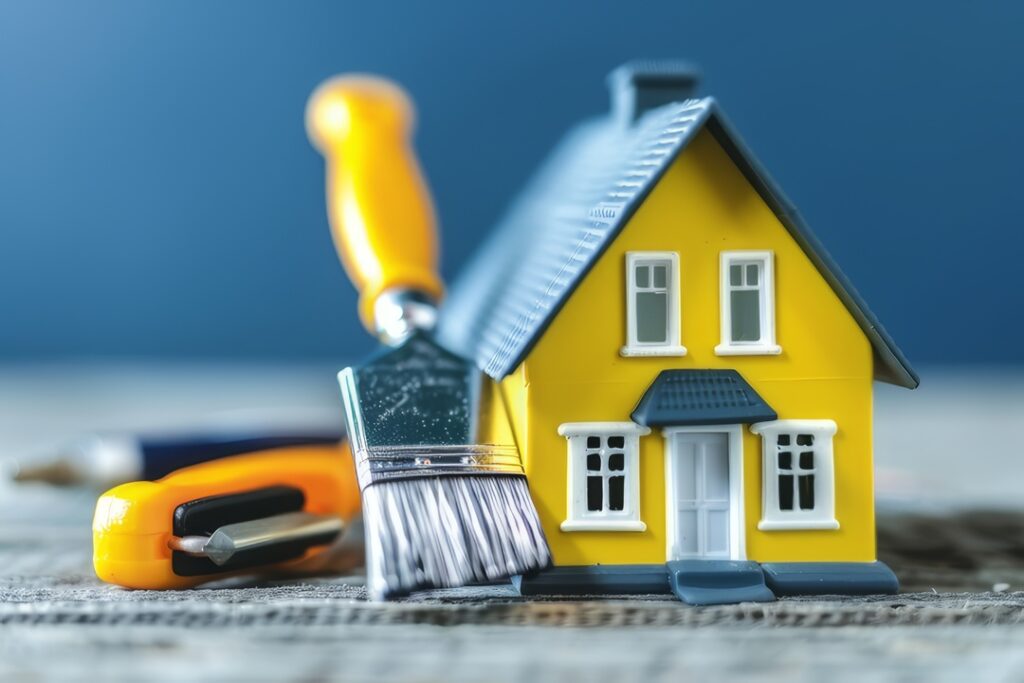
Home improvement loans offer numerous benefits to homeowners looking to upgrade their properties.
- Financial flexibility: one of the primary benefits of home improvement loans is the financial flexibility they provide. Unlike personal savings or credit cards, which may not cover the entire cost of extensive renovations, these loans offer substantial funding. This allows homeowners to undertake larger projects such as kitchen remodels, bathroom renovations, or even room additions without draining their savings or compromising their monthly budgets.
- Increased property value: Investing in home improvements can significantly increase the value of your property. For instance, upgrading to energy-efficient appliances, installing modern fixtures, or enhancing curb appeal through landscaping can make your home more attractive to potential buyers. As a result, not only do these improvements enhance your living space, but they also provide a return on investment when it comes time to sell;
- Lower interest rates: home improvement loans often come with lower interest rates compared to credit cards or personal loans. This is because these loans are secured by the value of your property, reducing the risk for lenders. Lower interest rates mean lower monthly payments and overall cost of borrowing, making them a more cost-effective option for financing renovations;
- Tax deductions: in some cases, the interest paid on home improvement loans may be tax-deductible, especially if the improvements are considered to add value to the property or increase its longevity. Homeowners should consult with a tax advisor to understand the specific deductions available based on their circumstances;
- Improving comfort and livability: beyond financial benefits, home improvement loans allow homeowners to enhance their living conditions. Upgrades such as better insulation, updated heating and cooling systems, or improved safety features contribute to a more comfortable and secure home environment for you and your family;
- Competitive advantage in the real estate market: homes with modern amenities and energy-efficient upgrades tend to attract more buyers and command higher prices in the real estate market. By using a home improvement loan to make these improvements, homeowners can gain a competitive edge and maximize their property’s marketability when it’s time to sell;
- Preservation of equity: rather than dipping into home equity or personal savings, home improvement loans allow homeowners to preserve their equity while still making necessary upgrades. This ensures that the equity built in the home remains intact for future financial needs or investments.
What are the main types of home improvement loans?
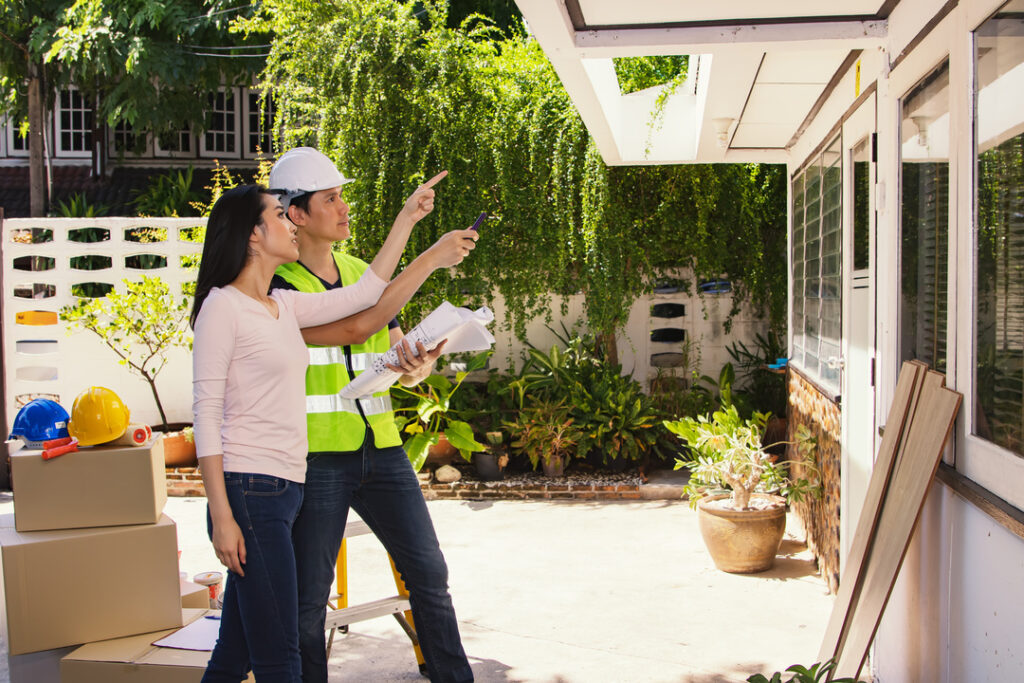
There are several types of loans specifically designed for home improvements. These include:
- Home Equity Loan: a second mortgage loan that allows homeowners to borrow against their home equity. It typically offers a fixed interest rate and fixed monthly payments;
- Home Equity Line of Credit (HELOC): a line of credit that allows homeowners to withdraw cash as needed, up to a maximum limit. It functions similarly to a credit card, with a variable interest rate;
- Cash-Out Refinance: a refinance in which the homeowner obtains a new mortgage loan for a higher amount than the current balance, receiving the difference in cash for home improvements;
- Personal Loans: unsecured loans that can be used for a variety of purposes, including home improvements. They generally have higher interest rates than secured loans;
- Home Equity Investment: a financial arrangement where an investor provides a homeowner with a lump sum of cash in exchange for a share of the future appreciation of the property’s value. Unlike traditional loans, this does not involve monthly interest payments and allows the homeowner to leverage the equity in their home without increasing their debt burden;
- FHA Title I Loans: government-backed loans through the Federal Housing Administration (FHA), designed for homeowners who have little to no equity in their homes. They can be used for a variety of improvements, such as roof repairs, plumbing, and more;
- Renovation Mortgages: mortgage refinances that allow you to include improvement costs. These may or may not be FHA-insured;
- Credit Cards: for small improvements or repairs, credit cards can be an option, although they generally have higher interest rates;
- Energy-Efficient Mortgages (EEMs): designed to finance energy efficiency improvements in the home, such as adding solar panels, insulation upgrades, high-efficiency windows etc.
Below, we will delve into these options in more detail. Learn how they work, who they are suitable for, and their advantages and disadvantages. This way, you will know which ones to consider when seeking financing for your home improvement projects.
Home Equity Loan
A Home Equity Loan, also known as a second mortgage, is a loan that uses the equity in your home as collateral. Equity is defined as the difference between your home’s current market value and the outstanding balance on your existing mortgage.
When you take out this type of home improvement loan, you receive a lump sum of money from the lender. This amount is repaid in fixed installments over a predetermined term, typically ranging from 5 to 30 years.
In this case, the interest rate is also fixed, meaning your monthly payments will be predictable throughout the loan’s duration, which is excellent for financial planning.
Who is the Home Equity Loan for?
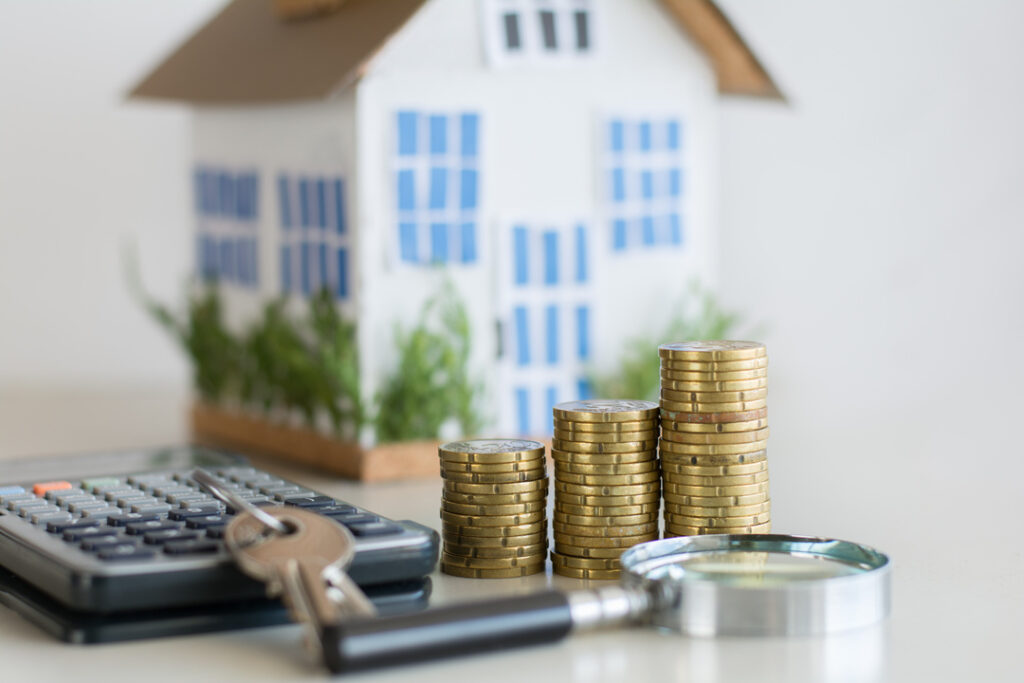
It is a good option for financing large-scale renovation projects that require a significant amount of money.
Thus, it can be used to fund a complete home renovation, room additions, or the modernization of electrical and plumbing systems.
What are the advantages of the Home Equity Loan?
This type of home improvement loan offers several benefits for the borrower, including:
- Generally lower interest rates since the loan is secured by your property, which reduces the risk for lenders;
- Predictable payments due to fixed interest rates and terms, giving you the peace of mind of knowing exactly how much you will pay each month, facilitating long-term financial planning;
- The possibility of deducting interest on your federal income tax, providing significant savings. However, it’s essential to consult with a tax professional to confirm your eligibility for this deduction.
What are the disadvantages of the Home Equity Loan?
This loan option also presents some disadvantages that should be considered before making any decisions. These include:
- Risk of losing your home, as it is used as collateral. Defaulting on payments can lead to foreclosure, so it’s crucial to ensure you can afford the payments before committing to this type of financial obligation;
- Limitation on the loan amount, which depends on the equity in your home. If you are still paying off your mortgage, the amount available for a loan will be lower;
- Additional costs, such as origination fees, property appraisal fees, and insurance, can affect the total cost of the financing.
Home Equity Line of Credit (HELOC)
A Home Equity Line of Credit, or simply HELOC, functions like a credit card but with the difference that you use the equity in your home as collateral.
Once approved for the loan, you gain access to a revolving line of credit with a predefined limit. You can draw from this amount during a specific period, usually ranging from 5 to 10 years.
During this draw period, you are only required to pay interest on the amount you use, not on the total credit limit. However, after the draw period, you enter the repayment phase, where you must pay back the total amount used, including interest, within a predetermined time frame.
Who is the HELOC for?
The HELOC is ideal for financing smaller renovation projects or those that require flexibility in credit usage. For example, it is suitable for situations involving gradual renovations or for covering unexpected expenses that may arise during the project.
What are the advantages of the HELOC?
The Home Equity Line of Credit can be advantageous for many individuals due to its features:
- Flexibility in credit usage, allowing you to withdraw only the amount needed for each stage of your renovation. This helps control spending and minimize interest payments;
- Generally lower interest rates compared to other personal credit options, such as credit cards, due to the property serving as collateral;
- The possibility of deducting interest on your income tax in some cases.
What are the disadvantages of the HELOC?
There are some downsides to this home improvement loan option:
- Variable interest rates, meaning they can fluctuate over time, impacting the amount of your payments;
- Risk of losing your home in the event of default, as the property is used as collateral;
- Temptation to overspend due to the HELOC’s flexibility. This can lead to excessive spending and unnecessary debt. Therefore, it is essential to maintain financial discipline when using it to ensure responsible credit usage.
Cash-Out Refinance

Cash-Out Refinance is a type of mortgage refinancing. With it, you replace your current mortgage with a new one of a higher value. The difference between the new mortgage amount and the remaining balance of your previous mortgage is received as cash.
If you have a good mortgage payment history and your property’s value has appreciated, you may qualify for a Cash-Out Refinance.
Who is Cash-Out Refinance for?
This option is suitable for those looking to consolidate high-interest debts, such as credit cards, or to finance large-scale renovation projects.
What are the advantages of Cash-Out Refinance?
This home improvement loan can be advantageous due to the following points:
- Access to a significant amount of money, depending on the equity in your home;
- Potentially lower interest rates if mortgage rates have decreased since you purchased your home, reducing the overall financing cost;
- The possibility of deducting interest on your income tax.
What are the disadvantages of Cash-Out Refinance?
The following aspects of Cash-Out Refinance are less favorable:
- Paying interest on a higher amount, since you are taking out a new mortgage for a larger sum and will therefore pay interest on a greater principal;
- Extending the loan term means paying interest for a longer period, increasing the total debt amount;
- Risk of losing your home used as collateral in case of default, which is a common risk with any type of mortgage.
Personal Loan
So far, we have discussed home improvement loan options that require collateral. However, there are alternatives for those who do not have an asset to use as collateral or do not wish to do so. One such option is the Personal Loan.
This type of loan is granted based on your credit history and repayment ability. It operates simply: you receive a fixed amount of money from the lender and repay it in fixed installments over a predetermined period, typically ranging from 2 to 7 years.
Who is the Personal Loan for?
This option is suitable for financing smaller renovation projects or for those who do not want to use their home as collateral for a loan.
What are the advantages of the Personal Loan?
Like other credit categories, the Personal Loan has its highlights, which include:
- Easy application, with a typically simple and quick application process, often with approval within a few days;
- No collateral required, reducing the risk of losing your property in case of default on the payments;
- Flexibility in the use of funds, allowing you to use the money as you see fit, including for multiple purposes. Renovate, replace furniture, install panels, and transform your home.
What are the disadvantages of the Personal Loan?
The disadvantages of this type of home improvement loan are notable:
- Higher interest rates compared to loans secured by collateral, due to the higher risk assumed by the lender;
- Generally lower loan amounts than those available through other financing options for renovations, such as the Home Equity Loan.
Home Equity Investment (HEI) is ideal for homeowners who have substantial equity in their property and need access to cash without taking on additional debt or monthly payments. It’s particularly beneficial for those who may not qualify for traditional loans due to income restrictions or credit issues. Homeowners looking to fund significant expenses such as home renovations, debt consolidation, or other large expenditures can also benefit from this type of investment.
Home Equity Investment
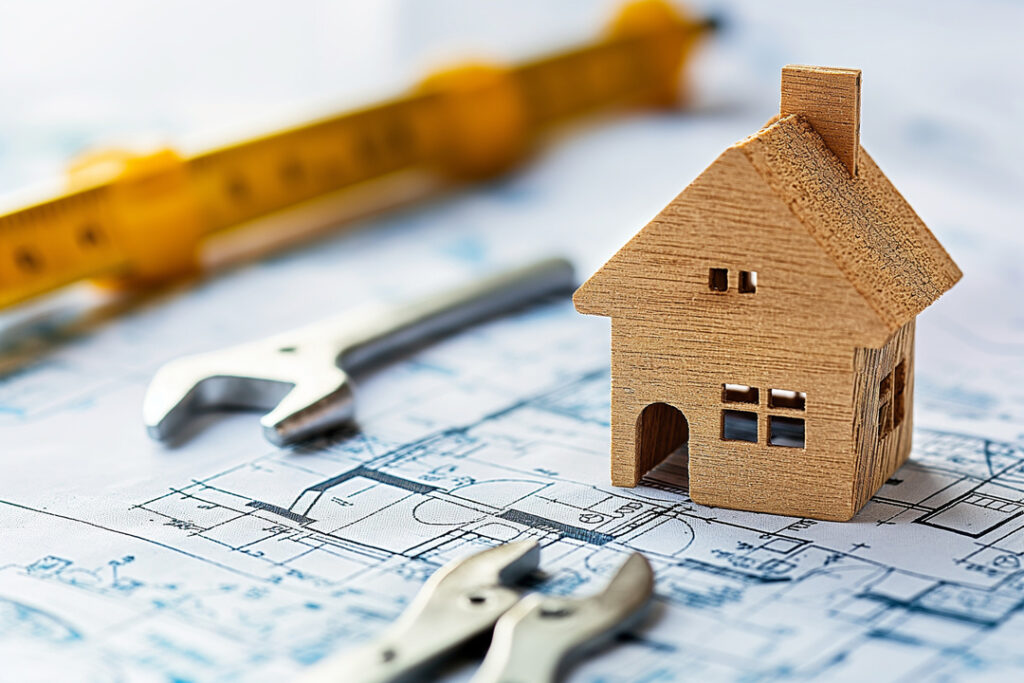
A home equity investment (HEI) is a relatively new way to access the equity you’ve built in your home without taking on additional debt. Unlike a traditional home equity loan or HELOC, which require monthly payments and accrue interest, an HEI allows you to sell a portion of your home’s future appreciation in exchange for a lump sum of cash. This means you don’t have any monthly payments and no interest to worry about.
HEIs are a good option for homeowners who want to access their home equity but don’t want the burden of additional debt. They can be used for a variety of purposes, including home improvements, debt consolidation, or even just to supplement retirement income.
However, it’s important to understand that you are essentially selling a portion of your home’s future appreciation. If your home doesn’t appreciate as much as expected, you could end up receiving less money back than you invested.
Who is the Home Equity Investment for?
HEI is ideal for homeowners who have substantial equity in their property and need access to cash without taking on additional debt or monthly payments.
It’s particularly beneficial for those who may not qualify for traditional loans due to income restrictions or credit issues.
Homeowners looking to fund significant expenses such as home renovations, debt consolidation, or other large expenditures can also benefit from this type of investment.
What are the advantages of the Home Equity Investment?
The following advantages of HEI stand out:
- No monthly payments: unlike traditional loans, HEI does not require monthly payments, easing the financial burden on homeowners.
- No Interest: there are no interest charges, making it a cost-effective option compared to standard loans.
- Access to cash: homeowners can access a significant amount of cash based on their home’s equity.
- Credit flexibility: beneficial for those with poor credit or inconsistent income, as approval is based more on the property’s value.
- Shared risk: the investor shares in the property’s future appreciation or depreciation, which can be advantageous if the property’s value decreases.
What are the disadvantages of the HEI?
The disadvantages of HEI are:
- Equity dilution: homeowners give up a portion of their home’s future appreciation, reducing their total equity.
- Costly in rising markets: if the property value increases significantly, the amount payable to the investor could be higher than a traditional loan’s interest.
- Complex agreements: the terms can be complex, requiring careful consideration and understanding of long-term implications.
- Limited availability: not all homes or homeowners may qualify, limiting accessibility to this financial product.
- Potential for loss: in a declining market, homeowners may still owe more than anticipated based on the agreement terms.
FHA 203(k) Rehab Loans
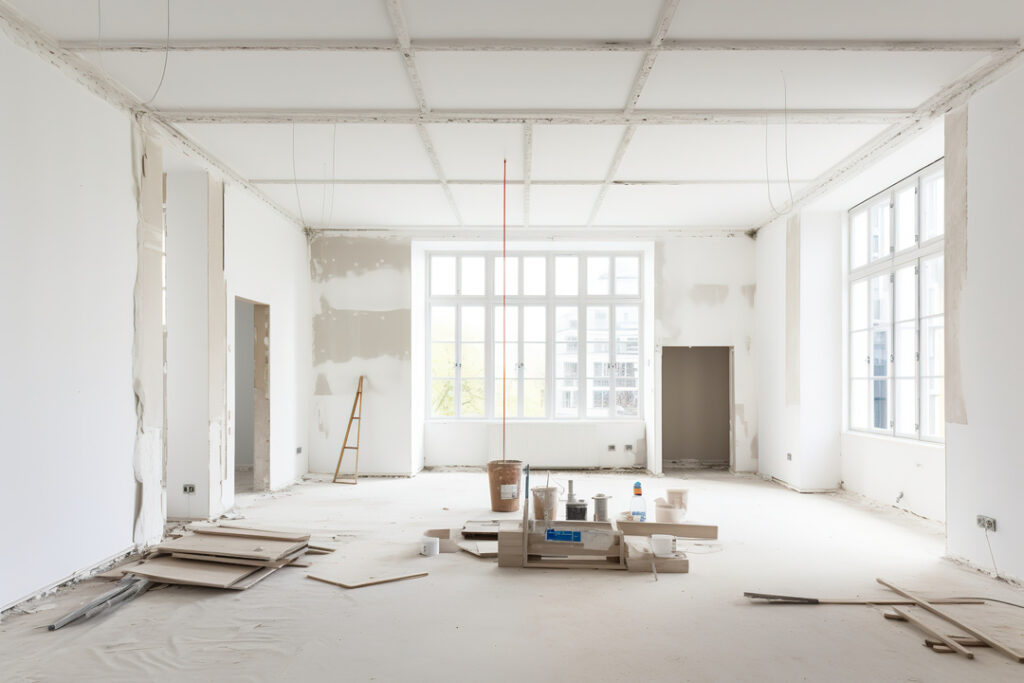
Another type of home improvement loan is the FHA 203(k) Rehab Loan. It falls under the category of Renovation Mortgages and is guaranteed by the U.S. Federal Government through the Federal Housing Administration (FHA).
This model offers an innovative solution that allows financing the purchase or refinancing of a property and its renovation within a single loan. This eliminates the need for multiple loans, simplifying the process and making the dream of renovating a home more accessible.
Imagine finding the perfect house that needs some renovations. This scenario is quite common, especially because fully updated homes often come with a higher price tag.
With the FHA 203(k) loan, you can finance both the purchase and the renovations, covering everything from structural repairs to aesthetic improvements.
Who is FHA 203(k) for?
The FHA 203(k) loan is ideal for those looking to purchase and renovate a property, especially when interested in a home needing structural or aesthetic improvements. It is also suitable for homeowners looking to refinance and renovate their current residence.
What are the advantages of FHA 203(k)?
The advantages of the FHA 203(k) loan make it an appealing option for many buyers and homeowners:
- Ability to finance renovations based on the future value of the property after improvements;
- Single payment structure, eliminating the need for multiple loans with comprehensive financing;
- Generally lower interest rates compared to conventional renovation loans;
- Flexibility in renovations, from basic repairs to major structural changes, tailored to the borrower’s needs;
- Low initial investment required;
- Government insurance through FHA guarantee, making the loan more accessible by protecting the lender in case of default;
- Ability to include various costs beyond renovations, such as furniture and appliances;
- Enhances property value with improvements that increase market appeal.
What are the disadvantages of FHA 203(k)?
Despite its considerable advantages, FHA 203(k) loans also have some drawbacks:
- Approval may take longer due to the loan’s complexity;
- Hiring an HUD-approved consultant is mandatory for certain types of renovations, incurring additional costs;
- Limited to properties occupied by the homeowner and restrictions on luxury renovations;
- PMI (Private Mortgage Insurance) may be required if the down payment is less than 20% of the loan amount.
FHA Title I Loans
Similar to FHA 203(k) loans, FHA Title I Loans are guaranteed by the U.S. government through the Federal Housing Administration (FHA). They are specifically designed to finance improvements or repairs in homes, particularly for those with little to no equity in the property.
For instance, imagine you own a home that requires significant roof and plumbing repairs, but you lack substantial equity in the property. This means your home doesn’t have enough equity to cover the difference between its current market value and any outstanding mortgage balance.
In such a scenario, an FHA Title I Loan would allow you to borrow up to $25,000 (for a single-family residence) to cover these improvement costs. The loan can be repaid over up to 20 years, depending on the amount and type of improvement.
Who are FHA Title I Loans for?
These loans are suitable for homeowners with limited equity in their homes who need financing for specific improvements, such as roof repairs, plumbing upgrades, heating systems, and other necessary repairs.
What are the advantages of FHA Title I Loans?
FHA Title I Loans offer compelling benefits for those seeking home improvement loan options:
- No substantial equity in the property is required;
- They may be used for various improvements and repairs;
- Flexible repayment terms are offered;
- Lower interest rates are typically due to the government guarantee.
What are the disadvantages of FHA Title I Loans?
Regarding disadvantages, the following points should be noted:
- The loan limit is capped at $25,000 per single-family residence;
- Credit approval is required, and there may be restrictions on the type of improvements financed.
Fannie Mae HomeStyle Renovation Mortgage
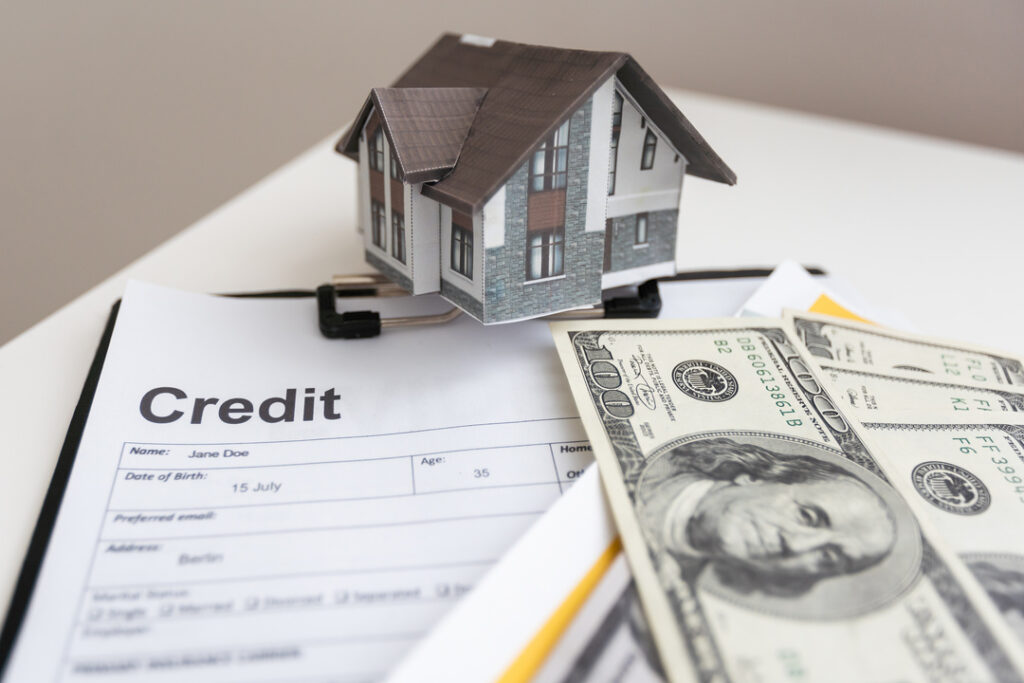
The Fannie Mae HomeStyle Renovation Mortgage is a type of home improvement loan that allows homebuyers to include the cost of renovations in their mortgage. It also offers the option to refinance the property while adding the renovation costs to the new mortgage.
For example, if you purchase a home that requires significant kitchen and bathroom renovations, this loan enables you to combine the purchase cost of the home and the renovation expenses into a single loan. This makes it a streamlined financing option and can result in cost savings through lower interest rates due to the consolidation of loans and payments.
Who is the Fannie Mae HomeStyle Renovation Mortgage for?
This loan is ideal for homebuyers looking to include renovation costs in their mortgage financing. It is also suitable for those planning to make improvements to a property while refinancing.
What are the advantages of the Fannie Mae HomeStyle Renovation Mortgage?
The benefits of this type of home improvement loan include:
- Combining the purchase/refinance cost with renovation costs into a single mortgage;
- Use for financing various improvements, from minor repairs to major renovations;
- Generally lower interest rates compared to personal loans or credit cards.
What are the disadvantages of the Fannie Mae HomeStyle Renovation Mortgage?
Like all home improvement loans, this option has its limitations and drawbacks:
- More complex and time-consuming approval process;
- Requires evaluation and approval of renovation plans;
- May require a larger down payment compared to other financing options.
Credit Cards
Credit cards, while not loans in their pure form, are also considered as home improvement loans. After all, they can be used to finance small improvements or repairs in the home. For instance, if you need to purchase materials for a minor bathroom renovation or hire an electrician for small repairs, you can use your credit card to cover these costs quickly.
Who are Credit Cards suitable for?
For financing home repairs, credit cards are suitable primarily for minor improvements and situations where you can pay off the full balance quickly to avoid high interest rates. Additionally, they can be a good option when credit cards offer 0% interest promotions or cashback.
What are the advantages of Credit Cards?
Explore the benefits of using credit cards for home improvement loans:
- Convenience and quick access to credit;
- Can be used for various types of expenses and renovations;
- Allows you to take advantage of specific credit card promotions.
What are the disadvantages of Credit Cards?
On the flip side, here are the drawbacks of using credit cards to finance home repairs:
- High interest rates, especially if the full balance is not paid in full on the next statement;
- Can lead to quickly accumulating debt;
- Credit limits may be insufficient for large improvement projects.
Energy-Efficient Mortgages (EEMs)

Energy-Efficient Mortgages, commonly known as EEMs, are specific home improvement loans for those looking to finance energy efficiency improvements in homes. They can be used for installing solar panels, efficient windows, or upgrades in thermal and acoustic insulation.
For example, they can be instrumental in making your home more sustainable and in reducing long-term costs for energy and water.
Who are Energy-Efficient Mortgages suitable for?
EEMs are ideal for homeowners interested in financing energy efficiency improvements in their homes, reducing long-term energy costs, or increasing property value through sustainable upgrades.
What are the advantages of Energy-Efficient Mortgages?
Using this type of home improvement loan:
- Enables financing improvements that reduce energy costs, such as solar panels, efficient windows, insulation etc.;
- Can result in substantial savings on energy bills;
- Increases property value and makes it more attractive in the real estate market.
What are the disadvantages of EEMs?
On the other hand, disadvantages of Energy-Efficient Mortgages include:
- May have rigorous qualification criteria;
- Requires energy assessments and audits;
- Loan amounts may be limited to the cost of specific energy efficiency improvements.
What to consider before taking out a home improvement loan?
Before taking out a loan for home improvements, you need to evaluate some important factors to ensure you are making a healthy financial choice. Below, find out what they are and consider them before making your final decision.
Real need for the home improvement loan
First of all, assess whether the improvement is really necessary or if it can be postponed. Also, check if there are other financing options available, such as your personal savings.
Total cost of renovations
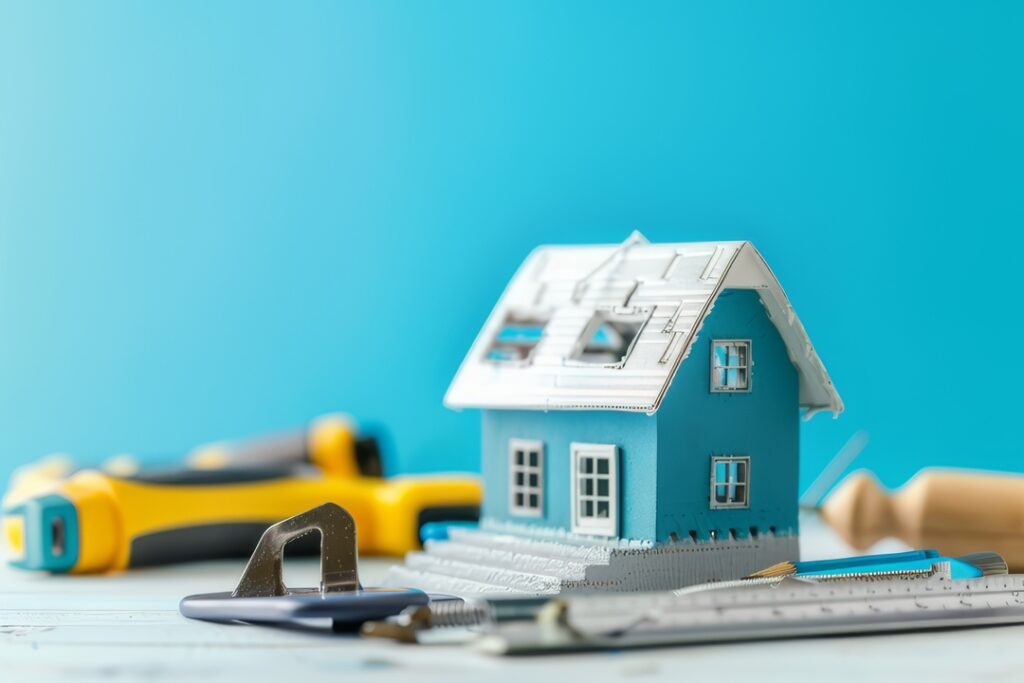
Before taking out a home improvement loan, it is important to keep in mind the total cost of the intended improvements. Therefore, consider what materials will be needed, labor costs, and any additional expenses.
This is a fundamental step since the loan amount should cover all expenses. Therefore, make sure to request quotes from construction material stores and project developers.
Interest rate and loan terms
Compare interest rates, terms, and conditions of different types of loans. Also, be aware of the types of home improvement loans to choose those that really meet your profile and needs.
Regarding interest rates, fixed rates provide predictable payments, while variable rates may start lower but can increase over time.
Ability to pay the installments
Another point that cannot be ignored when choosing your home improvement loan is evaluating your budget. This step is crucial to analyze whether you will be able to afford the monthly installment payments.
To do this, consider your income, possibilities of obtaining extra income, your fixed and variable expenses, and possible spending cuts. Remember to take out only what you can financially support. Otherwise, you may see your debt turn into a snowball due to the incidence of interest and fines.
Impact on property equity
Try to understand how the loan will affect your home equity, as loans such as home equity loans and HELOCs use it as collateral. This can lower interest rates since it limits the risk for the lender. So, see if these options are viable for your situation.
Fees and additional operation costs
Taking out a home improvement loan involves not only the loan amount and applicable interest rates. This type of operation also includes origination fees, appraisal fees, and possible penalties for early repayment. Therefore, remember to consider them when calculating the debt you are acquiring.
What is the best home improvement loan?
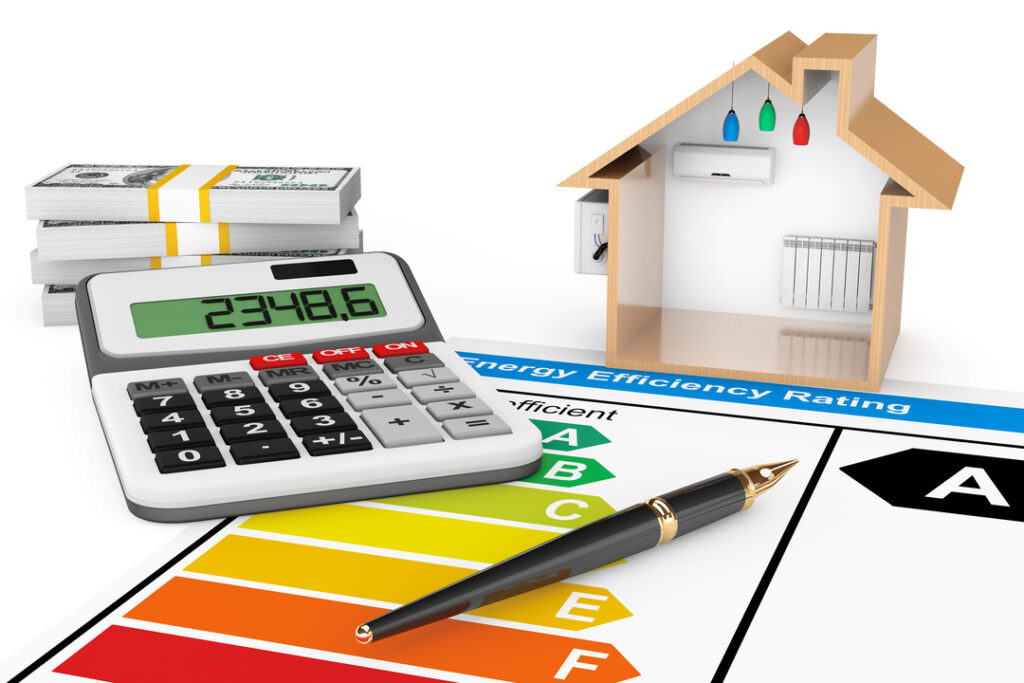
There is no single answer to this question because determining the best home improvement loan depends on your specific financial situation, goals, and needs. However, there are some types of home improvement loans that are better suited for certain circumstances:
- Home Equity Loans: this may be the best option for those with substantial equity in their home who need a fixed amount. It offers a fixed interest rate and predictable monthly payments;
- Home Equity Line of Credit (HELOC): this is an ideal alternative for ongoing or phased improvement projects as it works like a line of credit with variable interest rates;
- Personal Loans: these are useful for those without much equity in their property. They generally have higher interest rates but do not require collateral;
- Home Equity Investment: this option allows you to access your home equity without taking on debt. An investor provides you with a lump sum in exchange for a share of your home’s future appreciation. This can be a good option for homeowners who want to avoid monthly payments but are comfortable sharing their home’s future value;
- FHA Title I Loans: good for homeowners with little or no equity. They have limited loan amounts and flexible terms;
- Fannie Mae HomeStyle Renovation Mortgage: recommended for those buying a home who want to include the renovation cost in the mortgage or for those refinancing and wanting to include improvements;
- Energy-Efficient Mortgages (EEMs): these are designed for those who wish to finance energy-efficient improvements, such as solar panels.
Which companies offer home improvement loans?
Different financial institutions offer this type of credit line. You can find options provided by various players, including banks, fintechs, and credit unions.
How to search for a home improvement loan?
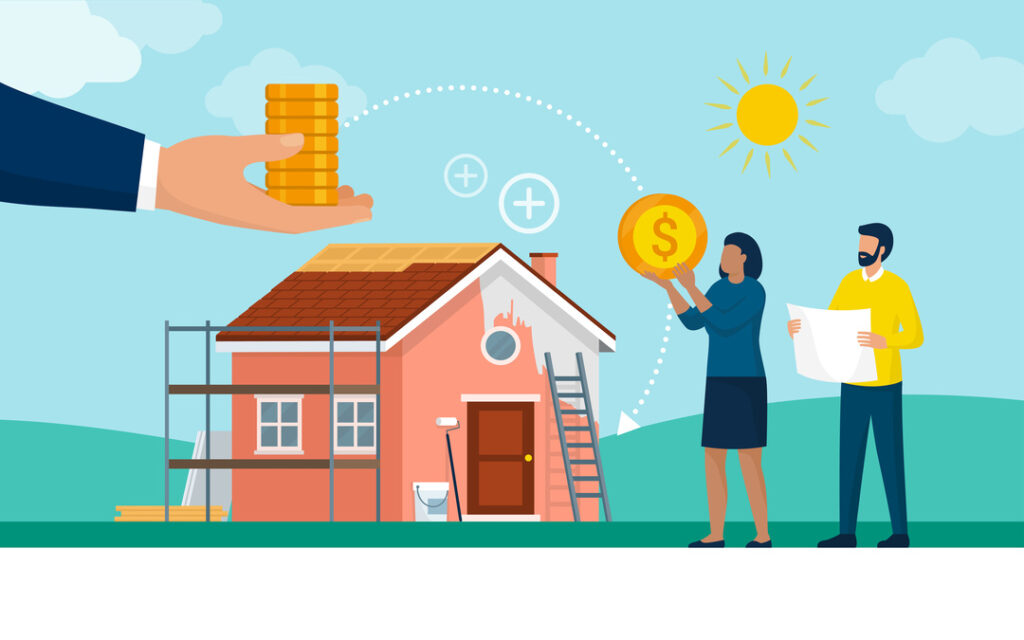
Searching for and finding the ideal loan for home improvements is a complex and time-consuming process.
However, by following some recommendations and using innovative platforms like Eos Loan, it is possible to simplify this task for both homeowners and project developers. Eos is a specialist in home improvements related to energy efficiency. Below, learn how to find the perfect financing for your home improvement project.
Evaluate your needs and payment capacity
There’s no other way to start. Initially, you need to understand your specific needs regarding the improvements, as well as your payment capacity. Determine the total cost of the project with all involved parties. Then, evaluate your monthly budget to ensure that you can afford the loan payments without compromising your finances.
Use the Eos Loan Platform
Eos Loan is a platform designed to facilitate the process of searching for home improvement financing. It brings together the best options from different financial institutions on a single platform. This eliminates the need to search for various financing options individually. Therefore, the tool saves you time and increases process efficiency, especially as it works to find the best alternatives according to each profile.
Eos is the perfect alternative for those who wish to upgrade their HVAC, change the lighting to LED, or replace electronic equipment with more energy-efficient options. It also offers credit lines for the replacement of items such as curtains, blinds, window films, installation of thermal insulation on walls and roofs, etc. Everything to improve your home’s energy efficiency.

On Eos Loan, you will find financing options from different types of financial institutions, including banks, fintechs, and credit unions. Using Eos Loan, project developers can quickly access a variety of financing alternatives. This allows them to find lines that can truly approve the homeowner and secure the deal.
With this, everyone leaves satisfied. On one side, the homeowner knows they found the best available option for their profile in the shortest time possible. On the other side, the project developer refers their client to an institution where the chances of credit approval—and consequently the project’s success—are higher.
Compare available options
By using the Eos Loan platform, you can easily compare different financing options side by side. The platform provides detailed information on interest rates, payment terms, and conditions for each loan, helping you make an informed decision.
Personalized pre-approval
Eos Loan offers a pre-approval system that analyzes the client’s profile and forwards the financing request to the institution with the highest chance of approval. This increases the likelihood that the financing will be approved and ensures access to the best possible offer.
Consider the different types of loans
On the Eos Loan platform, you will find various types of loans, including:
- Home Equity Loans;
- Home Equity Line of Credit (HELOC);
- Personal Loans;
- FHA Title I Loans;
- Home Equity Investment (HEI);
- Energy-Efficient Mortgages (EEMs).
This way, regardless of your profile, desired type of renovation, or required amounts, you have a better chance of finding an option tailored to your situation.
Consult your project developer
Since Eos Loan is designed to be used by both homeowners and project developers, ask your developer to use the platform to seek financing on your behalf. This is useful to access the best available options and increases the chances of financing approval.
Evaluate the lender’s terms and reputation
Before finalizing your choice, carefully evaluate the loan terms and the lender’s reputation. Eos Loan works with a network of reliable financial institutions, but it is always good to review the specific conditions and reviews of each lender.
Take advantage of Eos loan’s benefits
By using Eos Loan, you not only simplify the financing search process but also increase your chances of finding the best available option. The platform offers transparency, efficiency, and access to different financing options, regardless of your profile and needs. Therefore, it makes obtaining a home improvement loan easier, safer, and faster. Access the platform and learn more about the services to make your home the place of your dreams.
